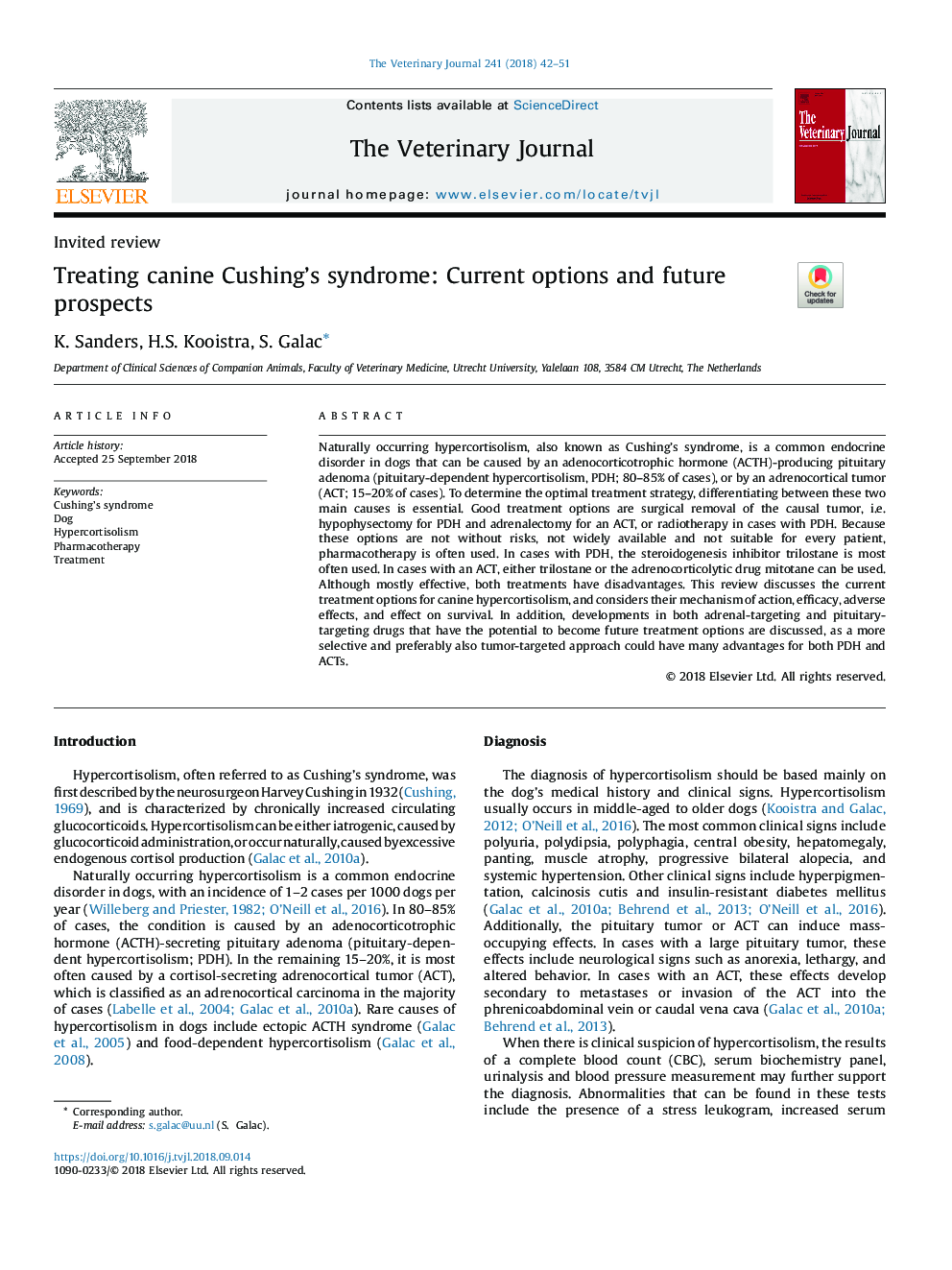| کد مقاله | کد نشریه | سال انتشار | مقاله انگلیسی | نسخه تمام متن |
|---|---|---|---|---|
| 11025831 | 1666510 | 2018 | 10 صفحه PDF | دانلود رایگان |
عنوان انگلیسی مقاله ISI
Treating canine Cushing's syndrome: Current options and future prospects
ترجمه فارسی عنوان
درمان سندرم کوشینگ سگ: گزینه های جاری و چشم انداز آینده
دانلود مقاله + سفارش ترجمه
دانلود مقاله ISI انگلیسی
رایگان برای ایرانیان
کلمات کلیدی
سندروم کوشینگ، سگ، هیپرکورتیزلیسم، فارماکوتراپی، رفتار،
موضوعات مرتبط
علوم زیستی و بیوفناوری
علوم کشاورزی و بیولوژیک
علوم دامی و جانورشناسی
چکیده انگلیسی
Naturally occurring hypercortisolism, also known as Cushing's syndrome, is a common endocrine disorder in dogs that can be caused by an adenocorticotrophic hormone (ACTH)-producing pituitary adenoma (pituitary-dependent hypercortisolism, PDH; 80-85% of cases), or by an adrenocortical tumor (ACT; 15-20% of cases). To determine the optimal treatment strategy, differentiating between these two main causes is essential. Good treatment options are surgical removal of the causal tumor, i.e. hypophysectomy for PDH and adrenalectomy for an ACT, or radiotherapy in cases with PDH. Because these options are not without risks, not widely available and not suitable for every patient, pharmacotherapy is often used. In cases with PDH, the steroidogenesis inhibitor trilostane is most often used. In cases with an ACT, either trilostane or the adrenocorticolytic drug mitotane can be used. Although mostly effective, both treatments have disadvantages. This review discusses the current treatment options for canine hypercortisolism, and considers their mechanism of action, efficacy, adverse effects, and effect on survival. In addition, developments in both adrenal-targeting and pituitary-targeting drugs that have the potential to become future treatment options are discussed, as a more selective and preferably also tumor-targeted approach could have many advantages for both PDH and ACTs.
ناشر
Database: Elsevier - ScienceDirect (ساینس دایرکت)
Journal: The Veterinary Journal - Volume 241, November 2018, Pages 42-51
Journal: The Veterinary Journal - Volume 241, November 2018, Pages 42-51
نویسندگان
K. Sanders, H.S. Kooistra, S. Galac,
